There’s no such thing as ‘too many stitches’ for textile artist Henriette Ousbäck. She masterfully floats layer upon layer of stitching across linen and sheer fabric to create her mythical and ethereal works. It’s a time-consuming labour of love but one that has a big impact.
And be assured, all that stitching is never too busy or overwhelming to the eye. Henriette allows each thread to carry its own tune, and the resultant concert of colour and texture is a visual feast. Like a painter, she blends threads of various hues to create new colours and nuances of light and depth.
Henriette’s approach to stitching is perfect for her favourite subjects of forests and fairytales. Tapping into both storylines and symbolism, her textile art is wonderfully narrative. And her techniques for stitching her beloved mosses and lichens are simple, yet intricate.
Into the Woods
Henriette: I love being outdoors. My husband has always sailed, and the west coast of Sweden has the best archipelago. The grey and pink granite of the islands are covered with yellow and grey lichens in the most intriguing patterns (nature’s secret writing).
I also love forests. As a child, I collected berries and mushrooms with my grandmother. And in the 80s, I dyed with plants and learned a lot about flowers and their names. The lovely green and beautiful grey mosses also inspire me, as well as my own garden.
Fairytales are definitely a favourite of mine. My mother was a very keen storyteller, and every German child grew up with The Brothers Grimm and knew the tales by heart. I also loved the tales of Hans Christian Andersen, Hoffmann’s Fairytales and Tales by Wilhelm Hauff. Later I became interested in world mythologies, as well as Carl Jung’s dreams research.
In my work, I try to find the essence or symbolic meaning that triggers my curiosity. I examine the meaning of colours and the underlying morality in the fairytales, especially knowing most fairytales weren’t meant for children at all.
The series called Daughters of Ran was inspired by Ran, the Nordic goddess of the sea. She was married to the sea god Aegir, and she pulled drowned sailors to the bottom of the sea to the golden halls of Aegir. The couple had nine daughters, all named for different kinds of waves.
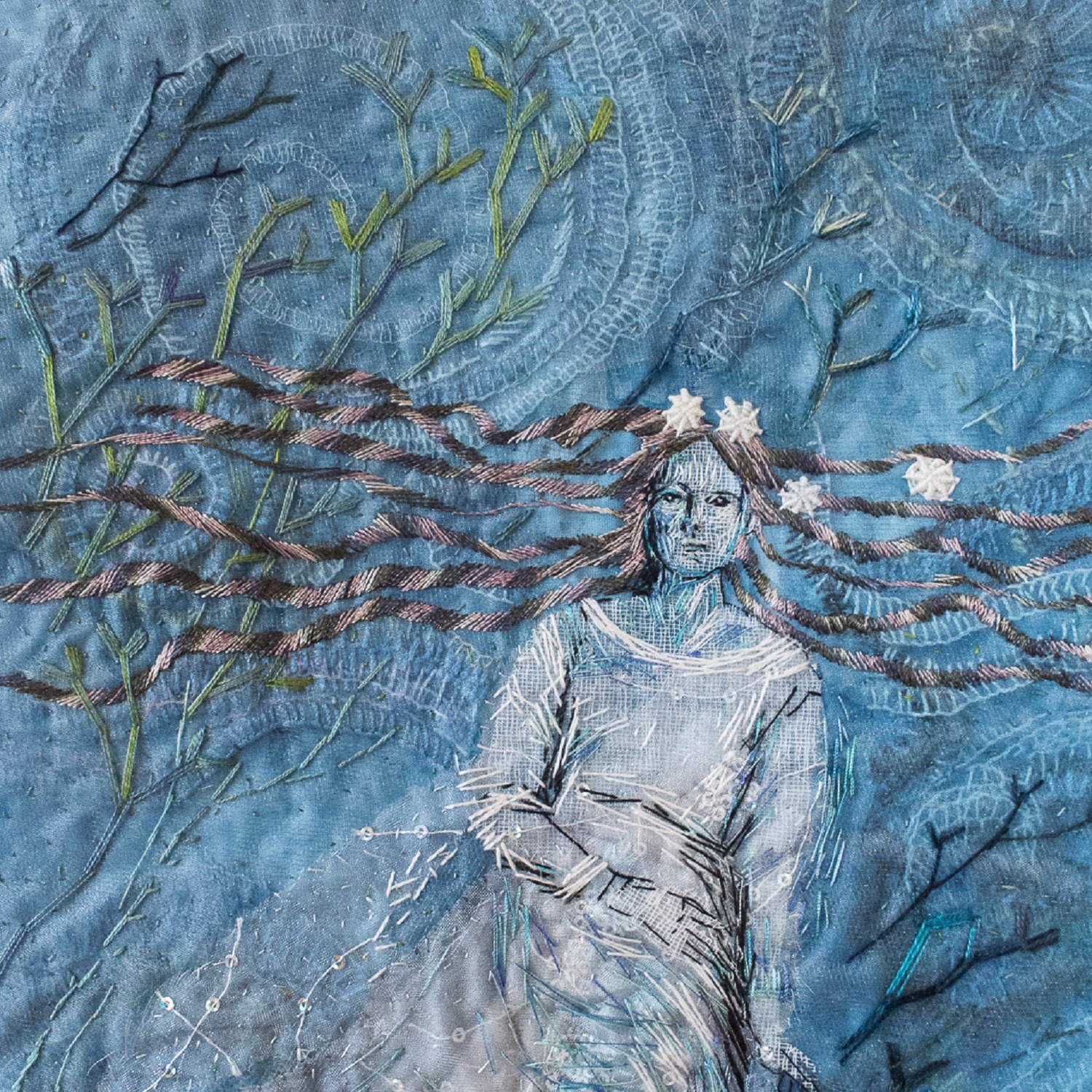
For my Little Red Riding Hood piece, I was inspired by the story’s symbolic content: a girl on the edge of adolescence facing a wolf that symbolized sexuality, curiosity and danger.
And The Raven Brothers works were inspired by the tale of seven brothers being transformed into ravens upon the birth of their sister, and the sister’s task to release them from the enchantment.
Sometimes I imagine my own fairytales. Fallen From the Sky is a good example. It’s the biggest embroidery I’ve ever done, and it took me three years to complete. When I first began Bayeux stitching on a large cloth hand dyed with indigo, I didn’t know where it would lead. It eventually became an angel who had fallen from the sky and was having difficulty returning to heaven.
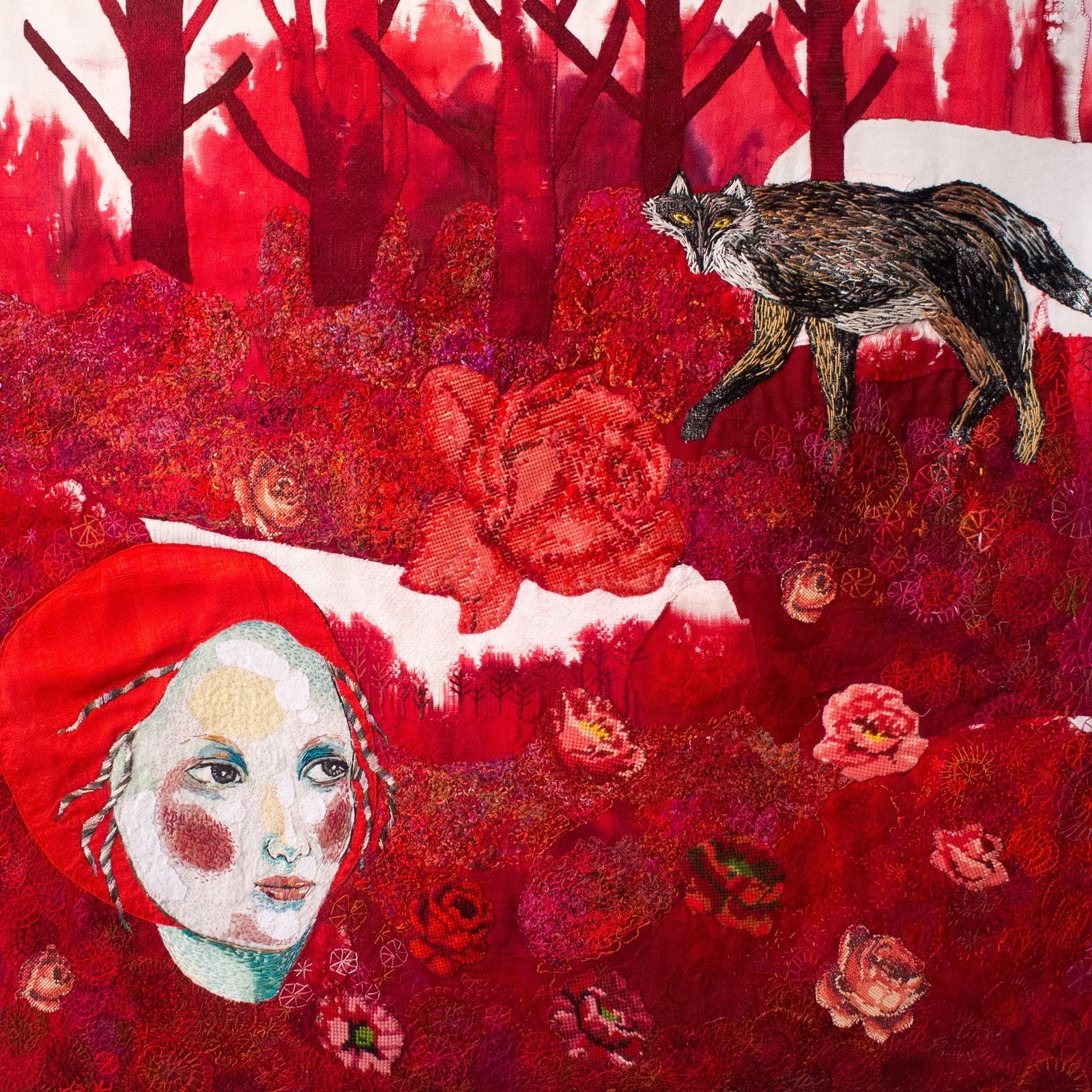
The power of needle and thread
My work has gone through many stages. I always try to find new ways to express myself or test different techniques.
I love how simple materials like fabric, thread and a needle can be so hugely expressive.
I also appreciate how textiles have roots way down in the human soul. They have been with mankind since the beginning, whether in the making of baskets, knotting of rugs or weaving of cloth.
I also feel an incredible connection with the female heritage in textiles and using stitches and techniques handed down from women who lived long before me.
I’d describe my work as illustrations of thoughts and emotions. Other times, though, they are interpretations of real things, especially nature.
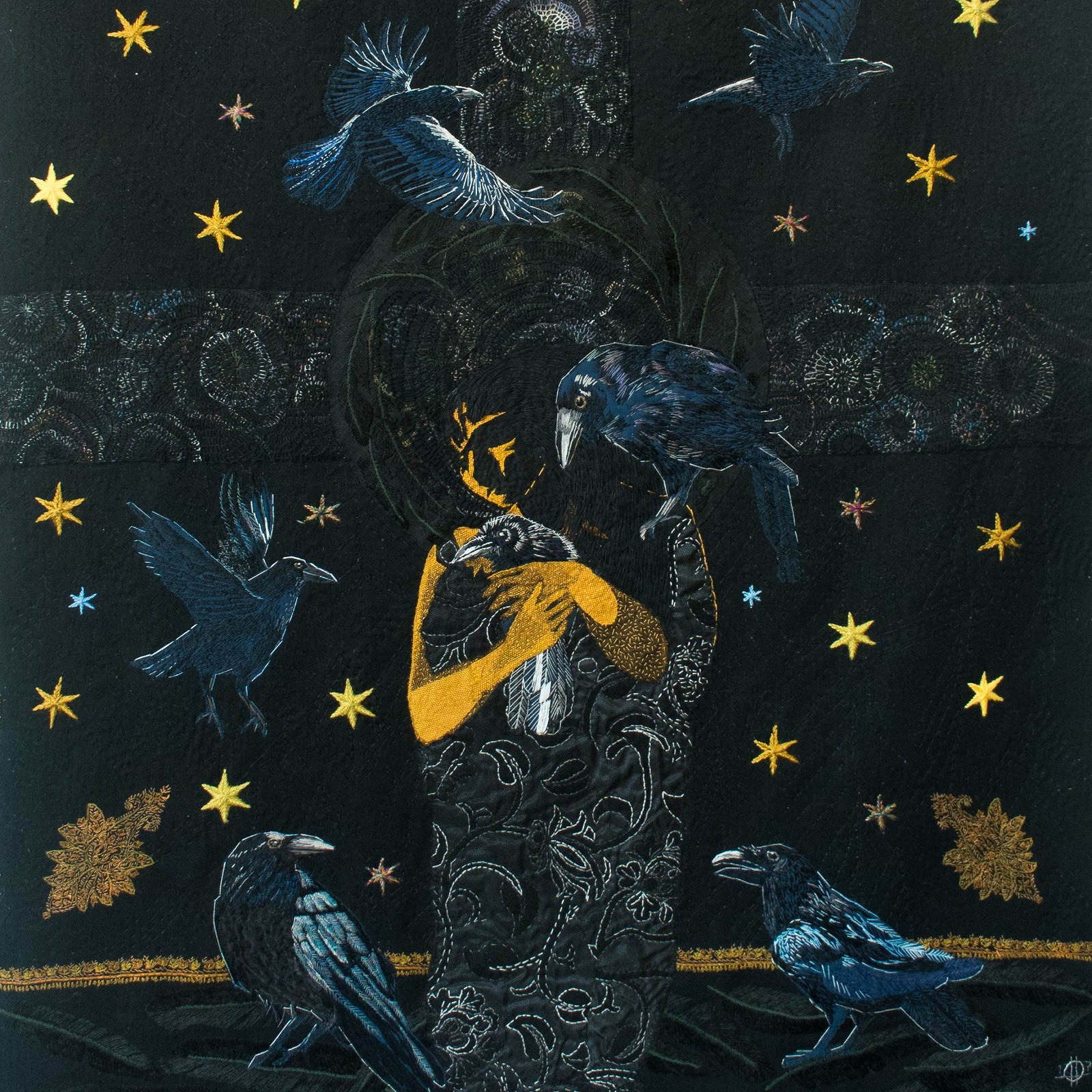
Developing artistic confidence
Paper was very scarce in Germany in the 50s after the war, so we children drew in the books lying around. I also drew with sticks in the sand on the streets. It had the advantage of unlimited space, and I could draw big pictures over the entire street. I loved drawing and was good at it.
I did have drawing and painting lessons in school, but embroidery or other textile education was limited to handicraft education, which I never liked.
My art teacher always encouraged me to keep making and pursue an art education after matriculation. But I wasn’t drawn to a formal art education during high school. I probably was too shy for that big leap.
I felt safer pursuing a textile art education, so I applied to the Arts and Craft school in my hometown of Gothenburg, Sweden. I hadn’t the slightest idea if it would suit me, but it sounded fun.
After graduating, I teamed up with a large group of art and crafts artists to start the Arts and Craft House where we would meet, sell our products and show our work. That House meant the world to me concerning my development as an artist and finding my place in life.
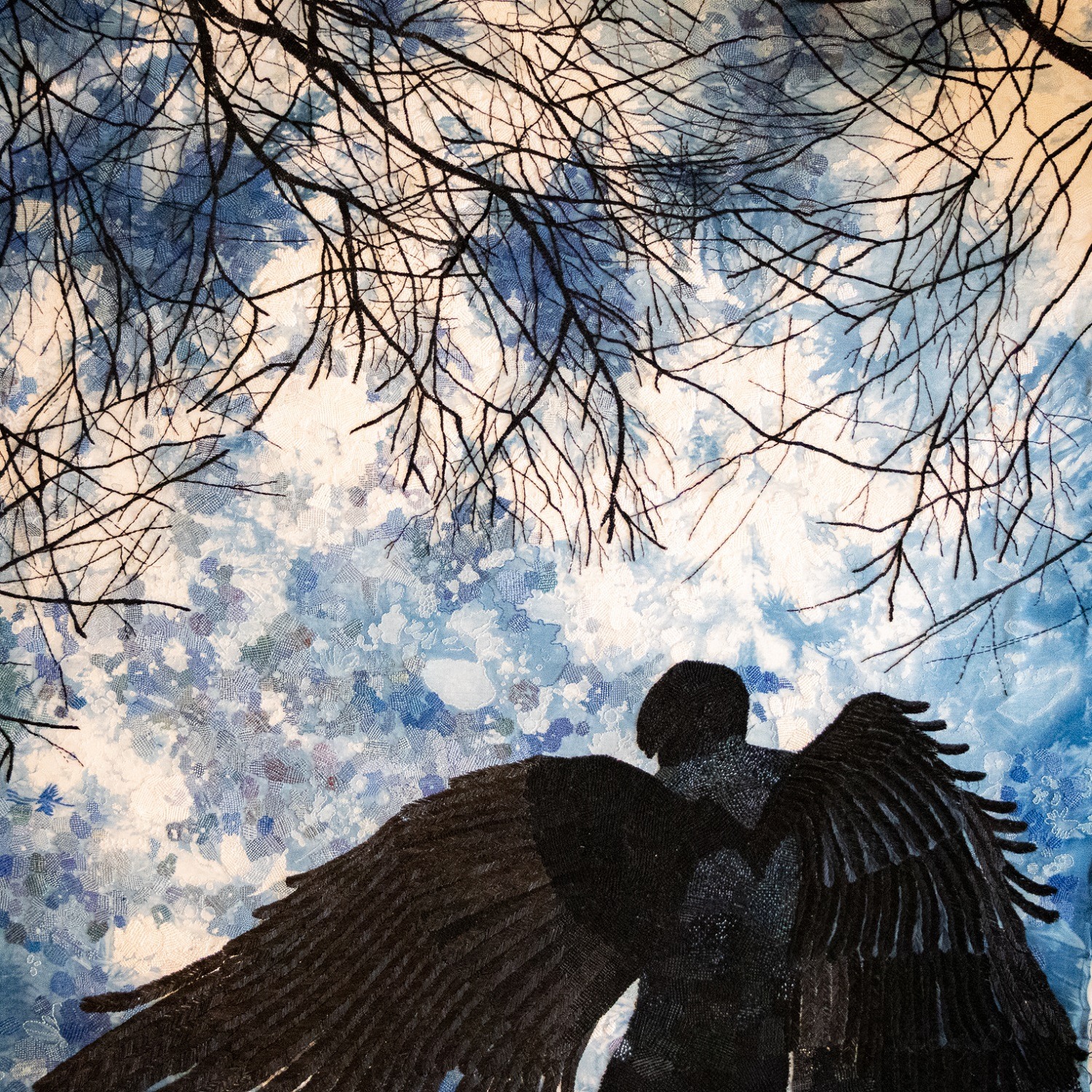
Developing ideas
I work in different ways, mostly depending upon the size of the work. Small pieces are created more intuitively. I let them grow in an organic way from an idea in my mind or a very small rudimentary sketch.
For larger works, I make a more detailed sketch, as I find it important for colours and composition to work well together. An embroidery is hard to do, and there is no possibility to ‘paint over.’
I like to gather ideas in sketchbooks. I collect lots of pictures that make me tick, along with texts, poetry and so on.
I also continuously experiment with stitches. I have a very long piece of fine linen, and every time I want to test something new, I take out the cloth and add to it. It’s like a stitch diary that’s very unassuming. I can roll and store it easily as well as take it to my workshops for inspiration.
When I get an idea, I start searching for and collecting related pictures and texts. I then create a sketch and select materials, floss, threads and yarns.
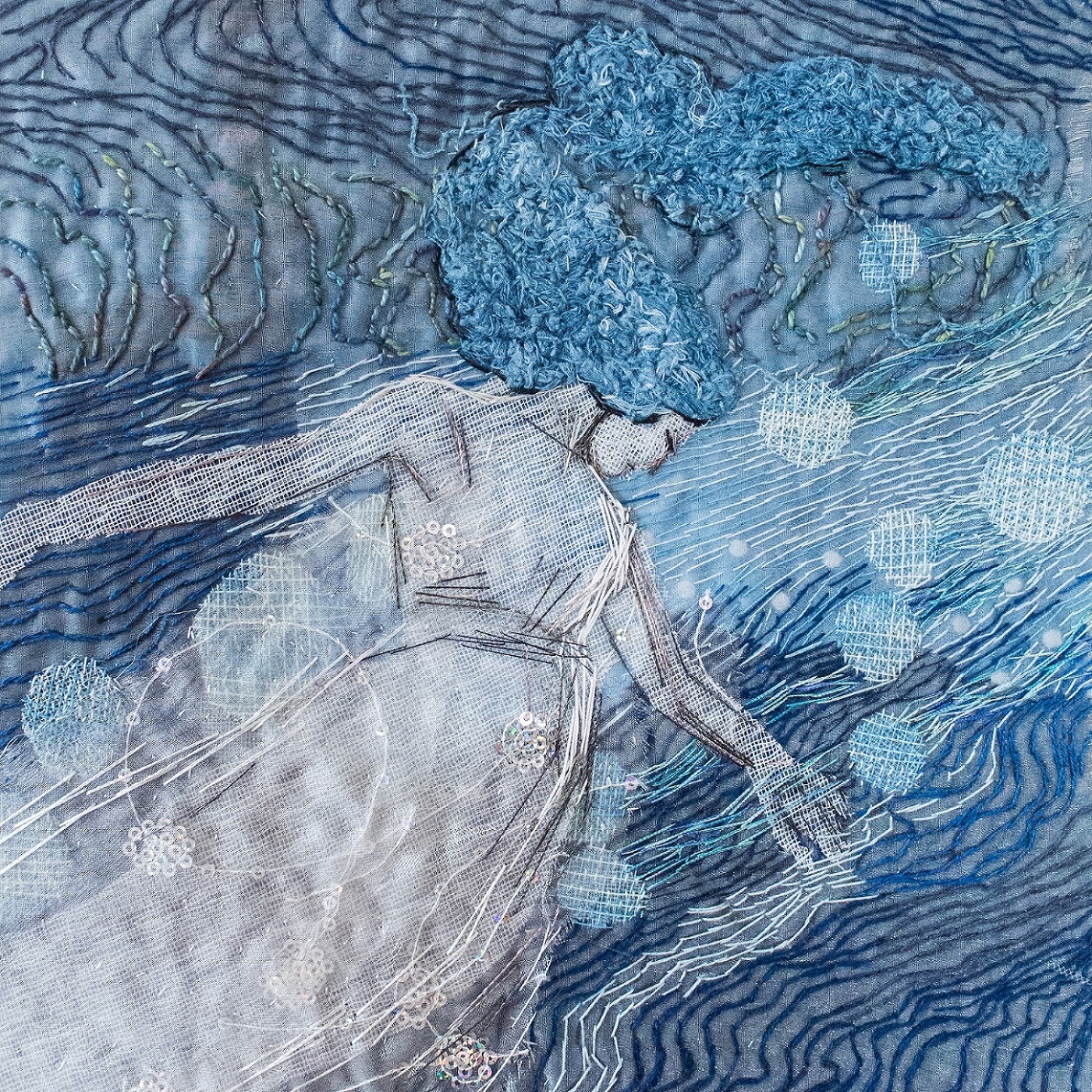
Emphasis on stitching
I always start with a textile collage, as the first layer supplies me with the colours. I then start stitching, always with an embroidery hoop, as I like to work on neatly stretched cloth.
Hoops work perfectly for me. I use quilt hoops that are stronger and more stable. But my pictures really aren’t that heavy, as the layers often consist of sheer fabrics.
I am anything but a minimalist when it comes to stitching. My work consists of many, many stitches. Not necessarily a lot of different stitches in the same work, but nice layers of stitch upon stitch.
That stubborn, never ending activity of the needle going up and down takes me into timelessness and a cosmos of my own. It becomes a sort of mediation that gives me peace and does not permit shortcuts.
Ironically, instead of taking time, stitching gives me time: time to reflect, consider and take a rest from our very busy world.
Sometimes my work doesn’t go as I planned, and I have no other choice than to lay the work aside. But I also often cut and re-use embroidered parts in newer works.
A good example is the Red Riding Hood piece. I had a clear picture in my mind of how I wanted it to be, but I just couldn’t make it work. I originally planned to dye white damask with blood red patches that wouldn’t bleed into the white. It was an impossible task.
I still tried to make it work using dense embroidery, but I had to face the fact it did not look as I imagined. Fortunately, I was able to save almost every part of the embroidery and reuse it in my new Red Riding Hood picture. I was quite pleased with the result.
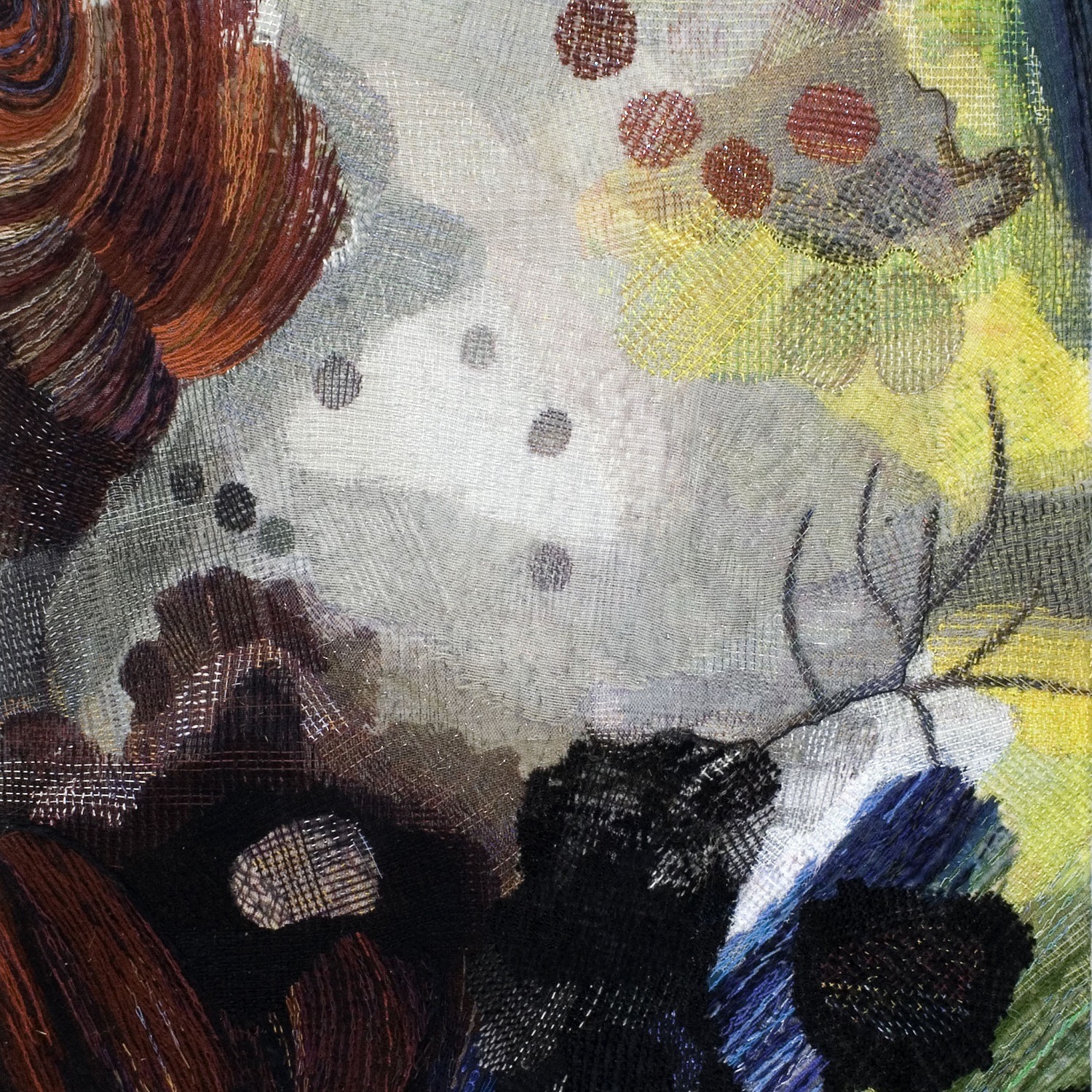
Love for the Bayeux stitch
Once I have determined the size and main colours of a piece, I create a textile collage as my first layer. I then cover the whole area with tulle or other transparent fabric in a neutral colour to bind it all together. Thereafter, the embroidery starts.
I don’t use a lot of different stitches. I prefer basic stitches that work together.
Earlier I was fond of ‘wild’ cross stitches, but I now like to use Bayeux stitch to ‘paint’ and stem stitch and all kinds of chains for ‘drawing’ lines and strengthening the composition.
I fell in love with the Bayeux stitch after demonstrating it at one of my workshops. As I was fiddling about with it, I realised its vast potential.
Bayeux stitch is quite a time consuming stitch but it allows me to blend colours and ‘paint’ with threads. I also enjoy the tight, rich surfaces it creates. I often use it in backgrounds, but also in combination with other stitches, like satin stitch, for figures.
The stitch was used in the famous Bayeux Tapestry made in the 11th century. It’s one of the world’s finest works of art. Its making is still a mystery but the story of its survival is breathtaking.
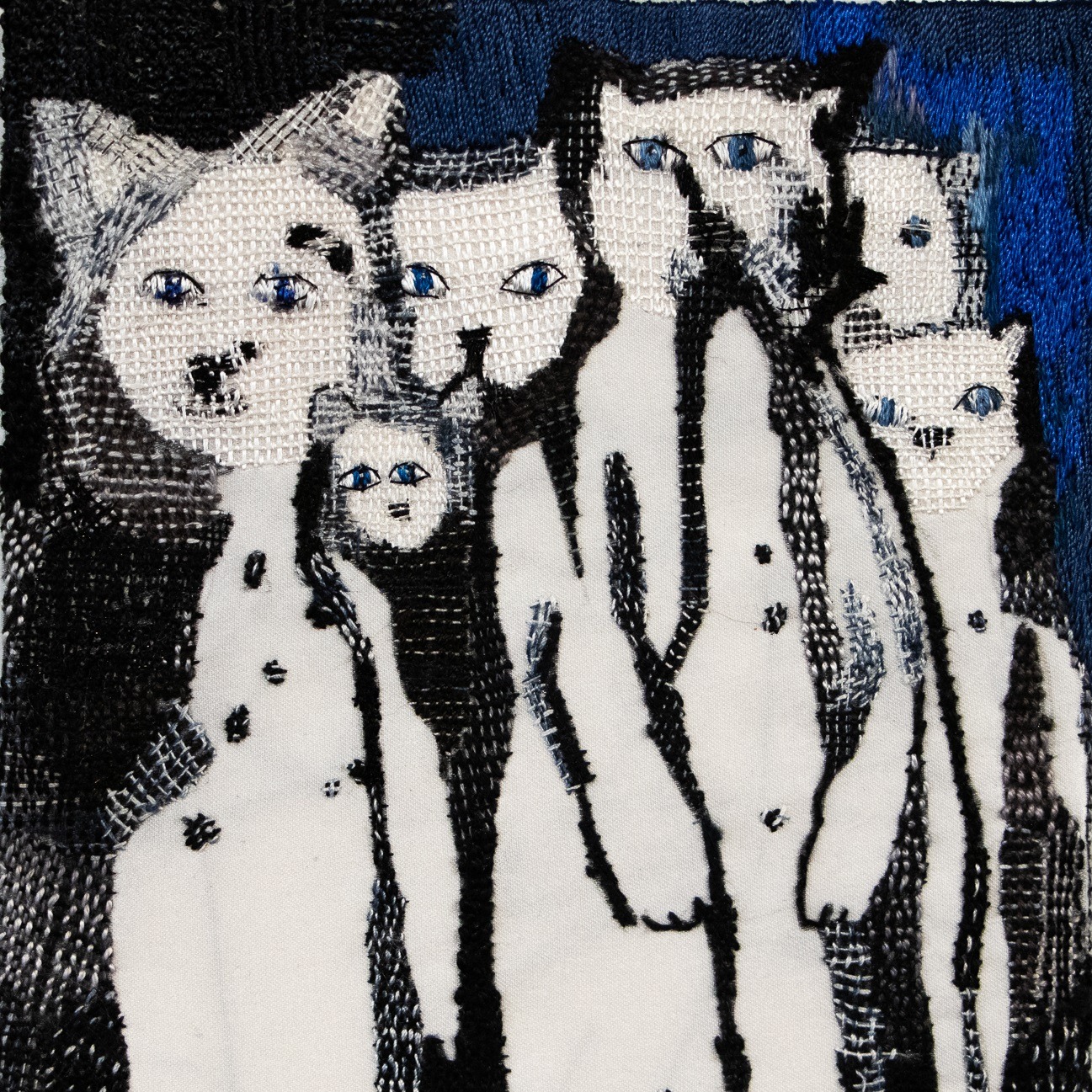
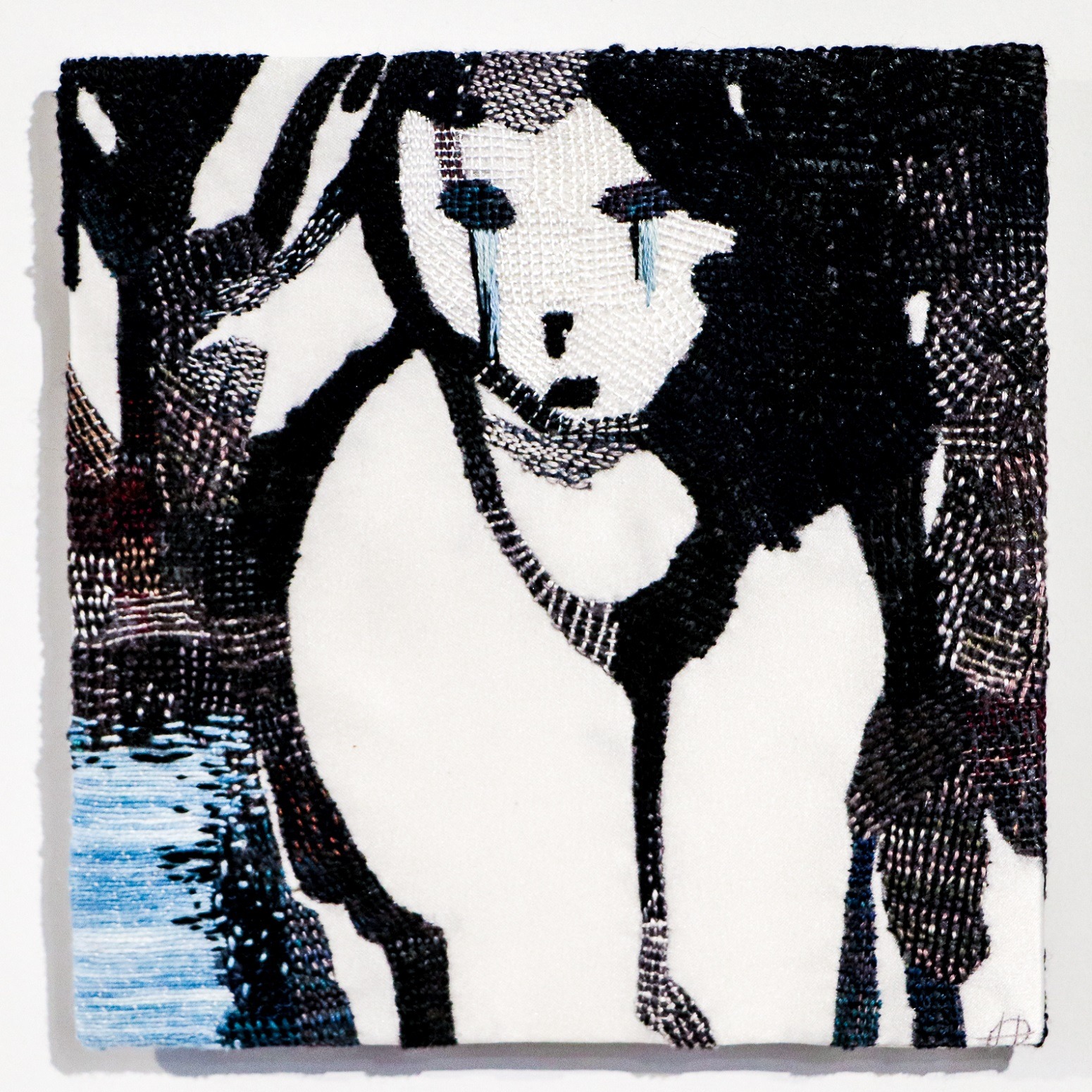
Favourite materials
I use all kinds of floss and threads. I like cotton and silk in all thicknesses and qualities. I almost never use woollen threads. I never enjoyed working with them, and they don’t correspond to the expression I’m seeking.
I often use quite fine yarn, as I use a lot of stitches in layers. I also like to dye my threads to achieve the nuances I need.
A lot of my materials come from second-hand shops, and I also get quite a lot from colleagues and friends. I also like finding cloth in flea markets, especially old linen and cotton tablecloths. I also like silky things and even fine woollen woven cloth.
Some of my materials come from a special shop for creative embroidery in my town (Gothenburg, Sweden) and on the Internet. Earlier it was easier to send for all kinds of good materials from the UK, but Brexit now makes that difficult.
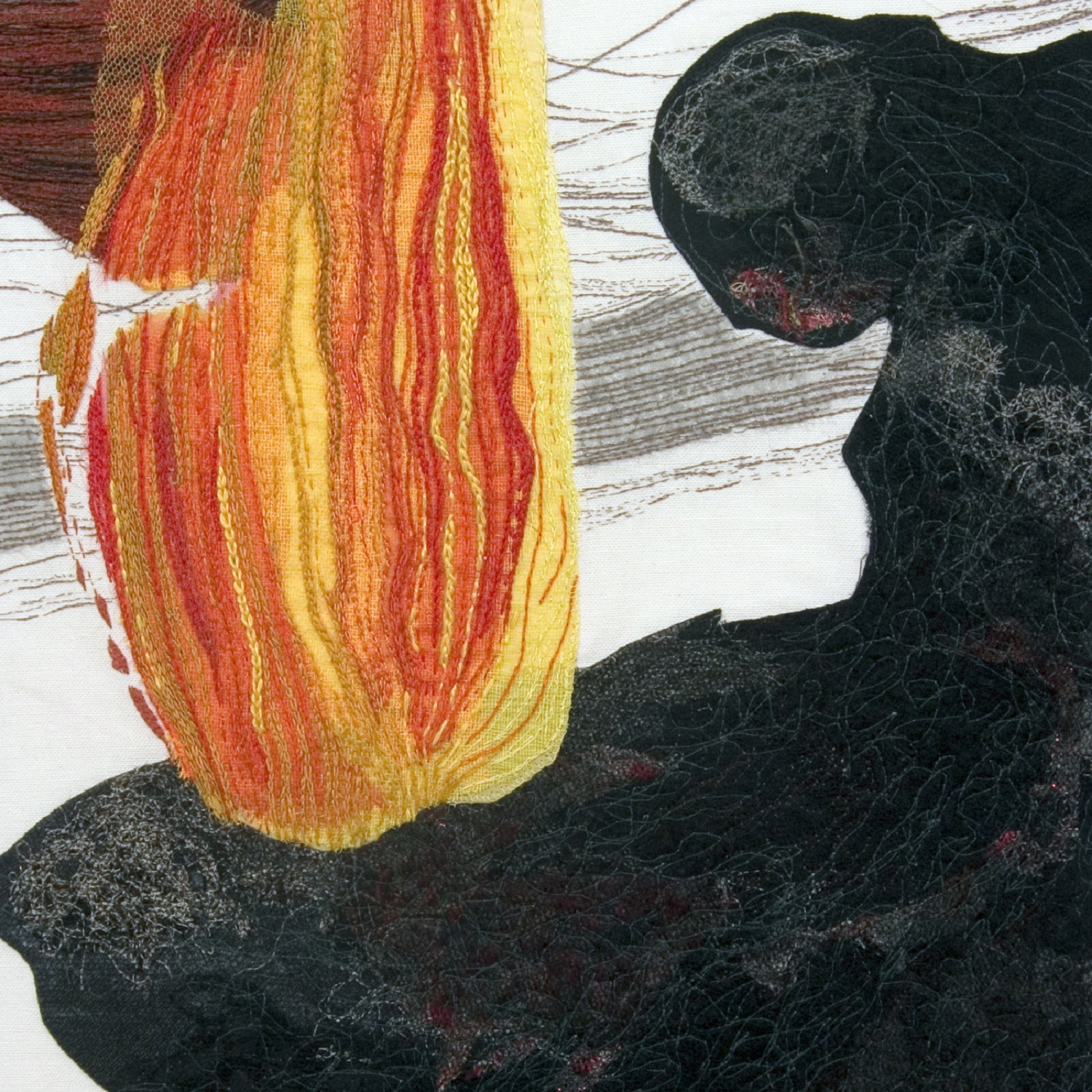
Lichens and bowls
As I am wildly in love with lichens and mosses and am inspired by the sea and woodlands, I also often use French knots (another time-consuming stitch) together with other raised stitches like woven picots and bullion knots. (Couching is also a favourite stitch.)
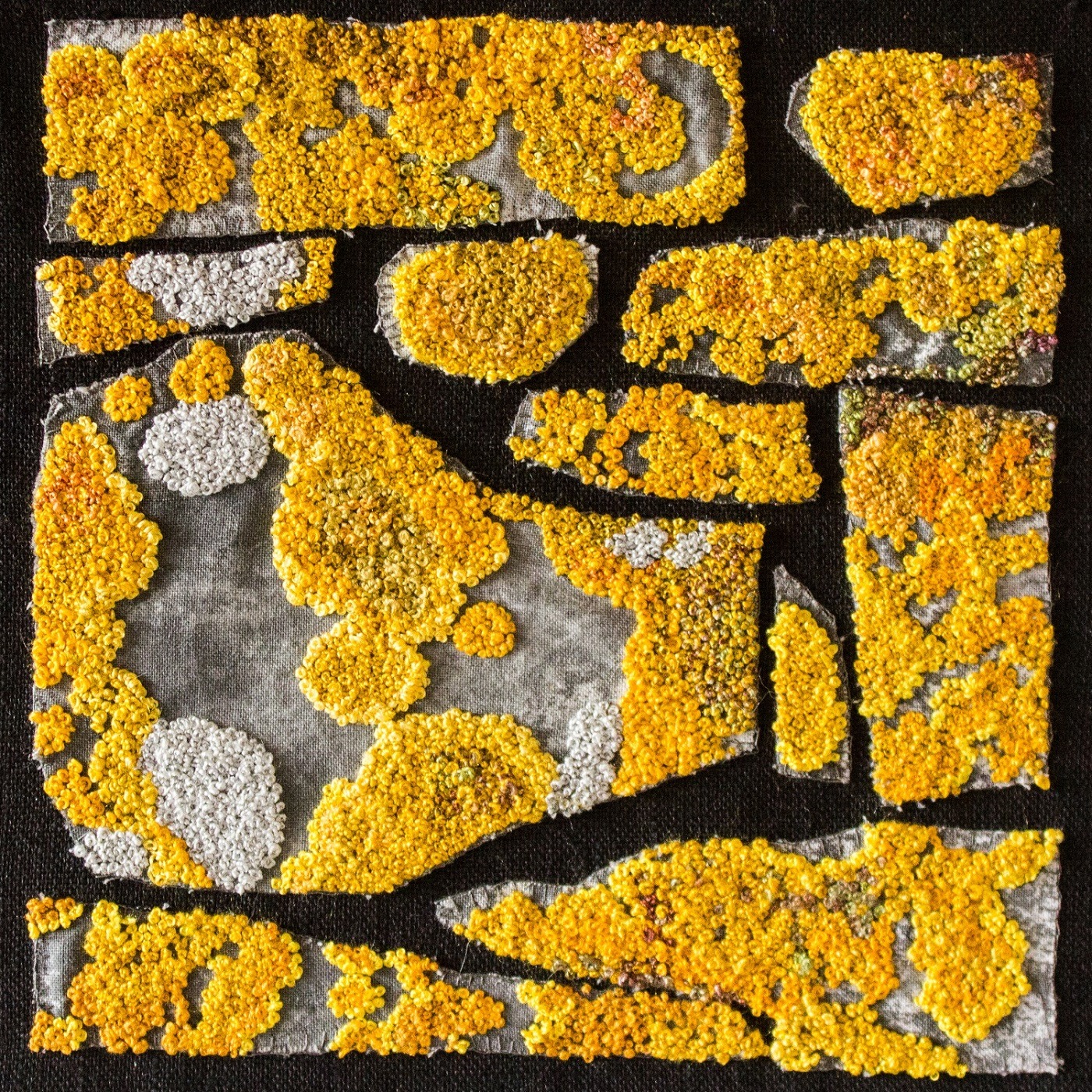
I also enjoy working with a three-dimensional form. I started with small masks, and they soon became figures and small sculptures named Angels and Shadows.
I start a form using a metal mesh net that works just like fabric. It is fairly supple, but it’s also strong enough to hold a shape. Then I apply small pieces of cloth and bind everything together with tulle. Then comes the stitching.
It takes skill to use the net without getting scratches all over your hands and arms (and looking like you’ve been fighting with a very angry cat). But the more you work with it, the more you find ways to avoid that.
I also use this technique to create bowls and containers. The Rumpelstiltskin fairy tale of the girl with the task of spinning straw into gold was an inspiration for one of my bowls. The outside was made of crude straw and the inside featured gold threads in laid work.
It was tricky figuring out how to work with two visible sides, but I eventually solved that problem. I often decorate the bowls with my lichen and moss stitching. But other themes come forth, like the different seasons, trees and fairy tales.
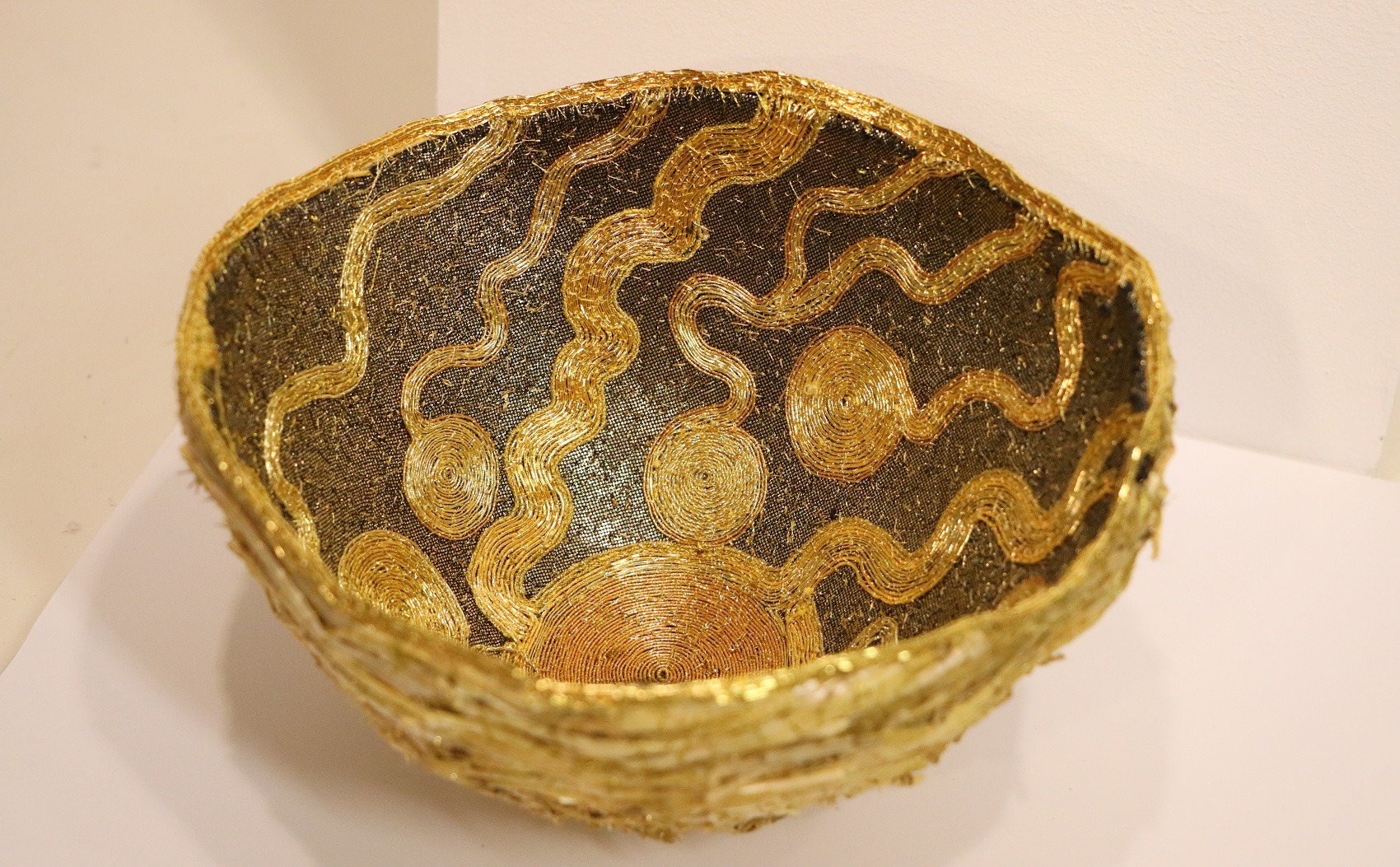
Finding your artistic voice
When I’m teaching, I encourage students to find a really good book about stitches. (The Stitch Bible by Kate Haxell is a good one). Start simple with a few stitches you like and keep trying them out with all kinds of materials and threads. Challenge yourself to stretch the boundaries of simple stitches.
It’s also important to keep your eyes open. Inspiration is everywhere! Visit shows and exhibitions and check out Pinterest. Try out everything that catches your eye. And learn as much as possible about colour and composition. It is not enough to just know the stitches.
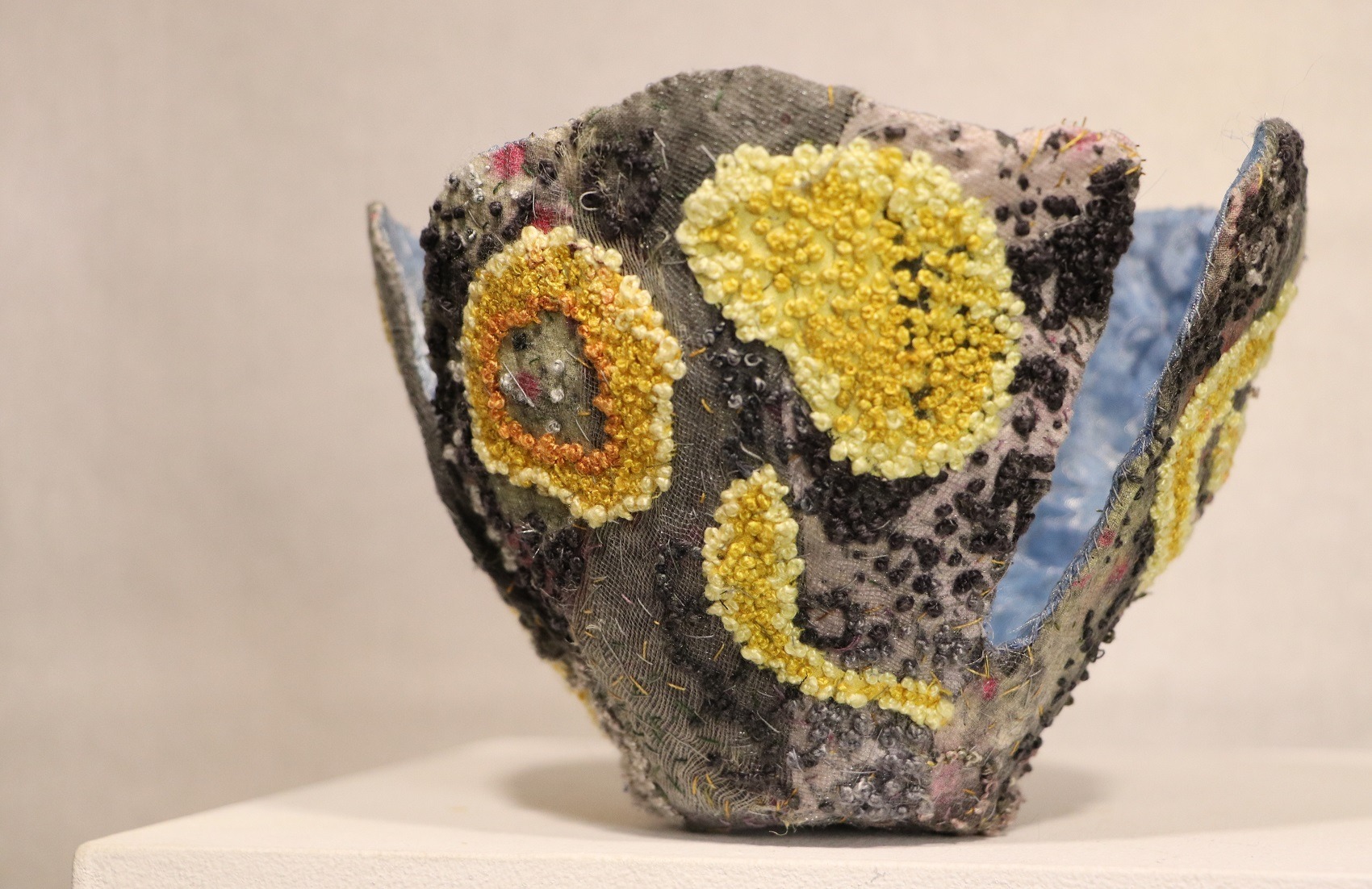
Studio sanctuary
I’ve always had a working space: an atelier. In earlier years, I rented a space with colleagues. But after having children, I set up my atelier at home in a separate room. It is very convenient, as I am a night owl who loves to work in the evenings.
Embroidery is much easier to do compared to painting or ceramics. I can stitch everywhere, often in front of the TV with my kids and spouse around me. But when forming ideas, I prefer the splendid isolation in my workplace.
I love to collect flotsam and jetsam everywhere, so my working space is never big enough.
My atelier is first and foremost the place where I have all my materials – my fabric stash, threads, found objects, writings and everything else I need. I am not a confirmed collector of totems, but I do have a LOT of things that are important to me.
I’m surrounded by colour – in bundles of fabric and materials on shelves, and my embroidery floss and threads fill up the boxes around me. I also have strange materials I may be able to use one day stuffed into the corners.
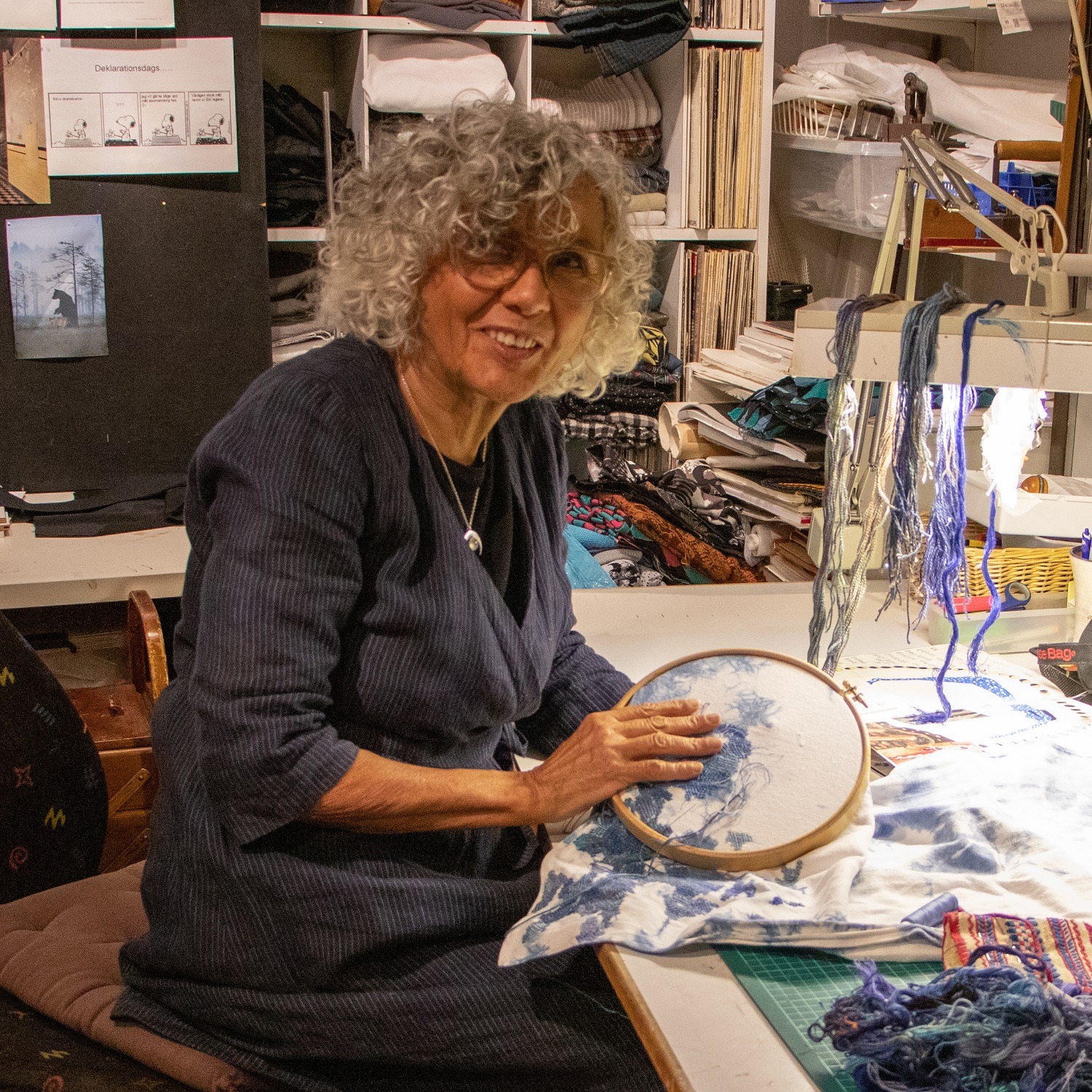
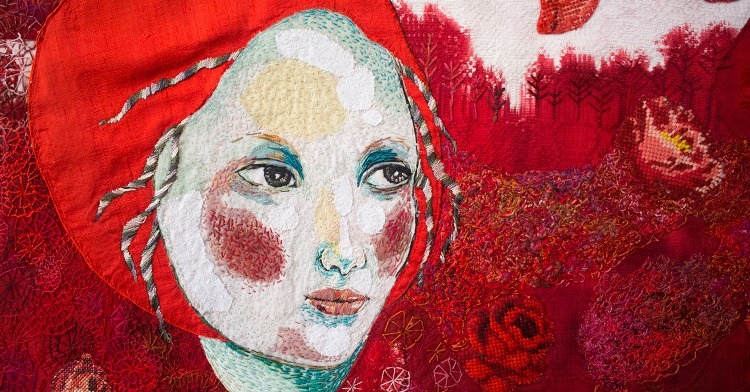

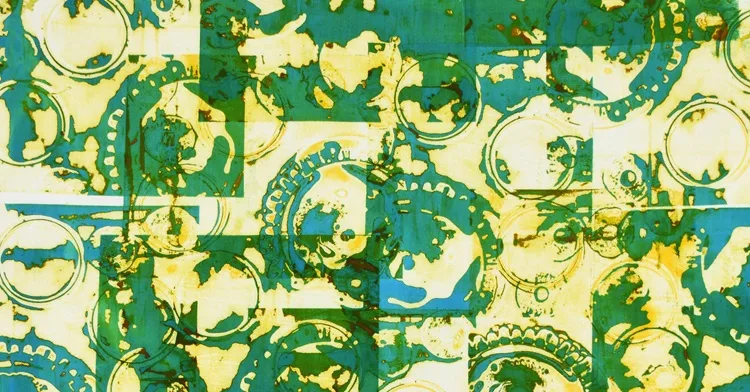
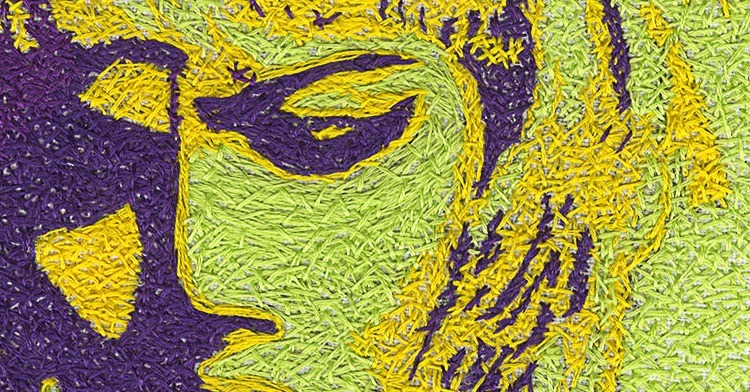
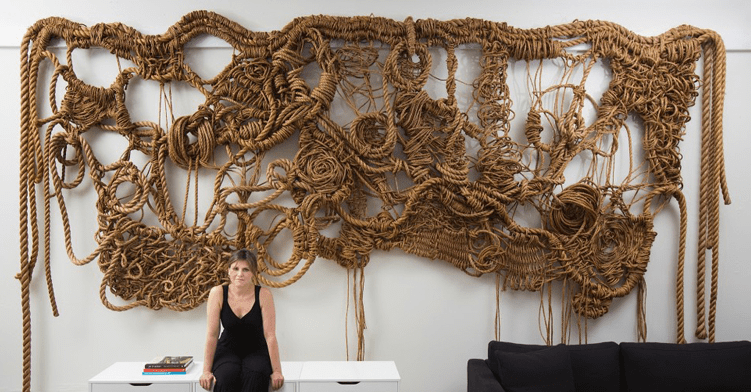
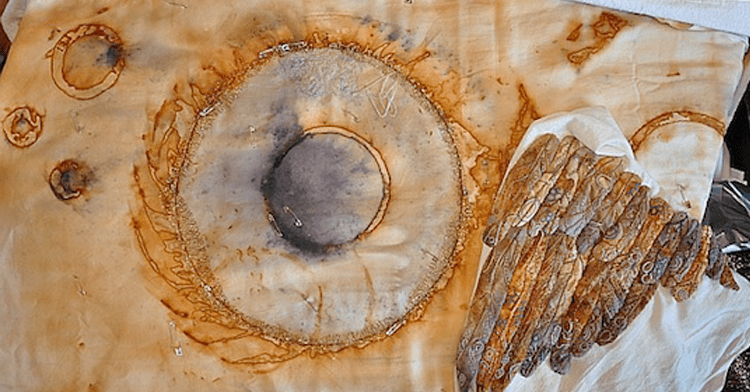
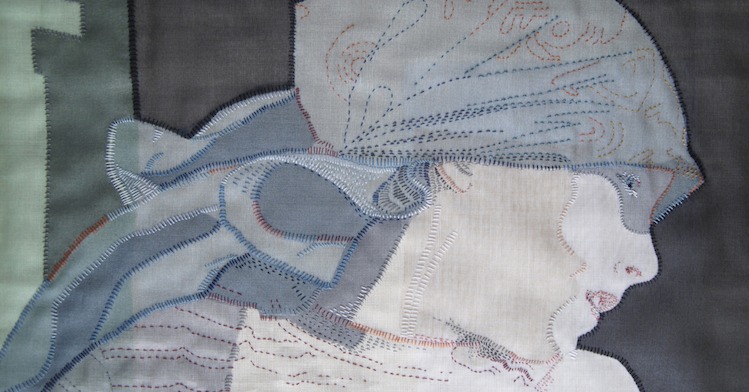
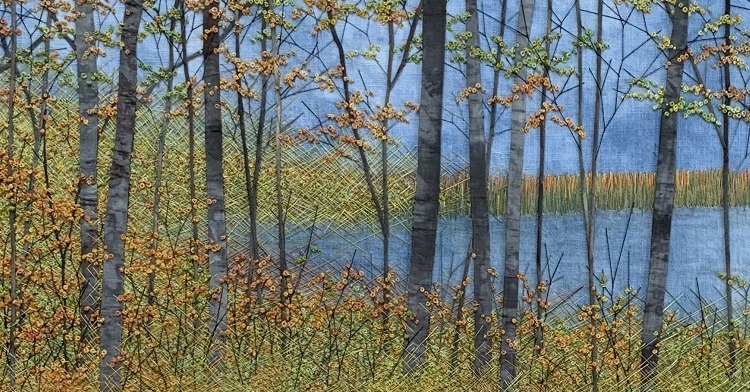
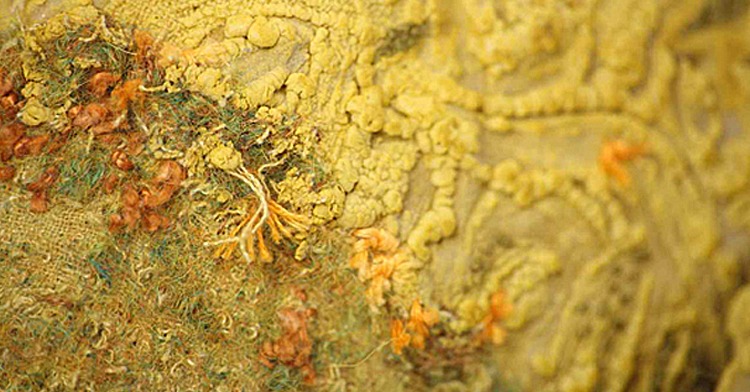
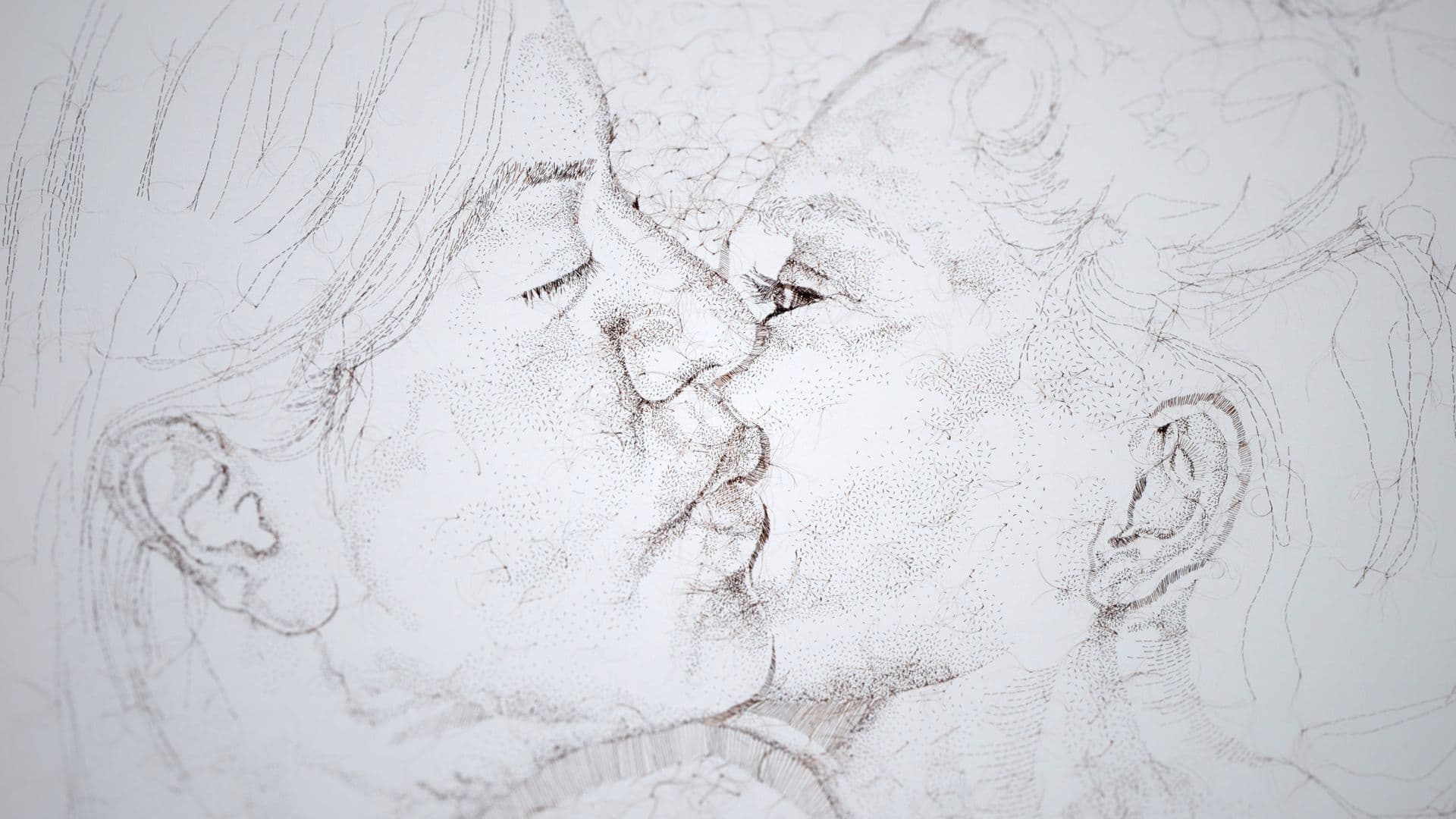
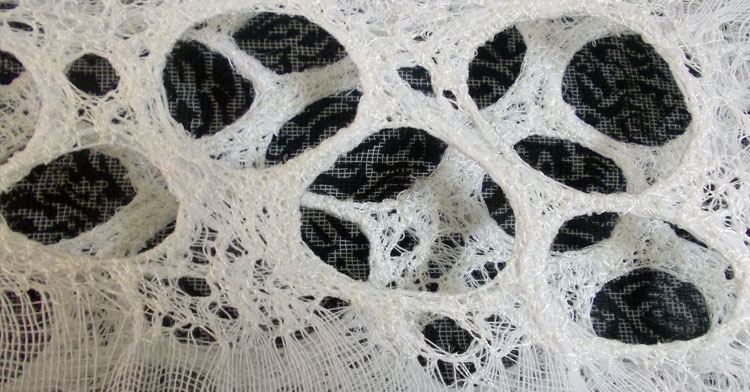
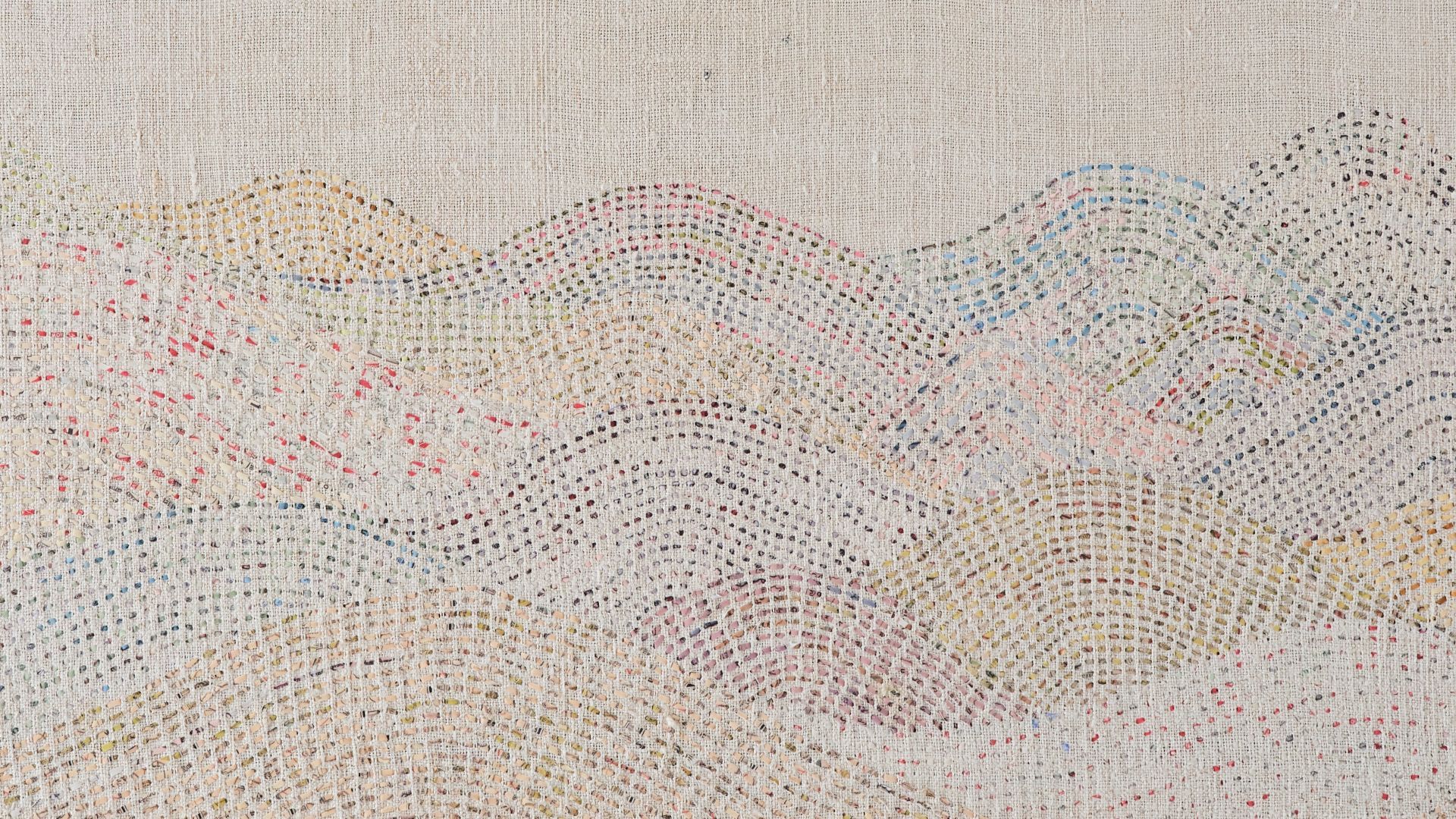
2 comments
Christine Strong
Great words but where are the pictures? I love folk and fairy tales too so I would love to see her pictures as well.
Siân Goff
Hi Christine, Unfortunately, we’re having some issue with some of the images on our website. We are working to get this fixed asap! Best, Team TextileArtist.